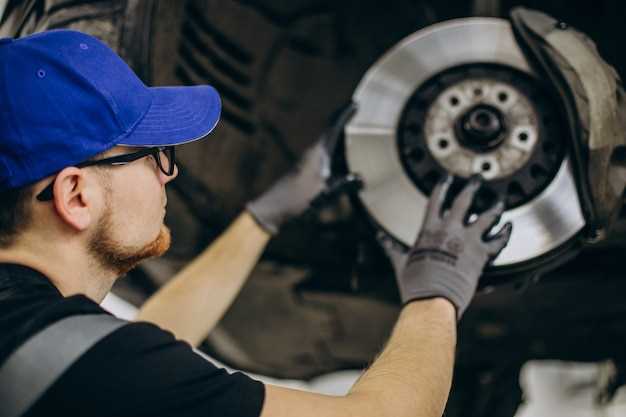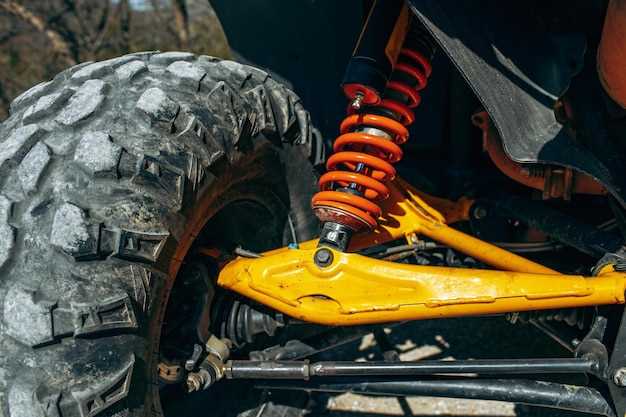
Your vehicle’s suspension system plays a crucial role in ensuring a smooth ride and maintaining vehicle control. Shock absorbers are a vital component of this system, responsible for dampening the impact of bumps and irregularities on the road. Over time, these parts can wear out, leading to deteriorated performance and safety risks. Recognizing the signs that indicate it’s time to replace your shock absorbers can save you from potential accidents and costly repairs.
One of the most noticeable signs of worn shock absorbers is an uncomfortable ride. If you feel every bump and dip on the road or if your vehicle bounces excessively after hitting a pothole, it may be time to consider a replacement. Poor shock performance can not only compromise comfort but also diminish your vehicle’s handling and responsiveness, jeopardizing your overall driving experience.
Additionally, if you observe uneven tire wear or if your car leans to one side during turns, these issues can signal failing shocks. The suspension system’s effectiveness relies heavily on the integrity of the shock absorbers, and neglecting these early warning signs can lead to more severe damage and reduced safety. Understanding these indicators is essential for maintaining your vehicle’s performance and ensuring a safe driving experience.
Increased Vehicle Bounce During Rides
If you notice that your vehicle bounces excessively during rides, it may be a clear sign that your shock absorbers are failing. The primary function of shock absorbers is to control the movement of the suspension system, ensuring a smooth and stable ride. When these components wear out, the suspension cannot properly dampen the effects of road irregularities, leading to noticeable bouncing.
This increased bounce can make driving uncomfortable and can also affect vehicle handling. It becomes harder to maintain control, especially during sharp turns or sudden stops. Ignoring these symptoms can lead to further suspension issues or even damage to other components of the vehicle, which can be costly to repair.
Additionally, excessive bouncing can cause premature tire wear and make the overall driving experience hazardous. If you find yourself experiencing significant bouncing, it is crucial to have your suspension system, particularly the shock absorbers, inspected and, if necessary, replaced. Addressing this issue early can restore your vehicle’s performance and enhance safety on the road.
Visible Leaks and Physical Damage on Shocks

One of the most noticeable signs that your shock absorbers may need replacement is the presence of visible leaks. Shocks are filled with hydraulic fluid, and if you observe any oily residue on or around the shocks, it indicates that the seals may have worn out or become damaged. This fluid is essential for the proper functioning of your suspension system, as it helps to absorb bumps and impacts. Without adequate fluid levels, the performance of your shocks diminishes significantly, leading to a rough ride.
Additionally, physical damage to the shocks is a clear indicator of their condition. Look for any signs of dents, cracks, or deformation on the shock body. Such damage can occur due to road debris, collisions, or general wear and tear over time. Compromised shocks will not perform correctly, compromising the overall stability and handling of your vehicle.
It’s also crucial to inspect the mounting points and bushings connected to the shock absorbers. Should these components be worn or fractured, they can result in abnormal movement and further damage to the suspension system. Regular checks for fluid leaks and physical condition can prevent more extensive repairs down the line.
In summary, visible leaks and physical damage are clear signals that your shock absorbers are failing. Ignoring these issues can lead to reduced safety and performance, so it is advisable to address them promptly to maintain optimal suspension function.
Unusual Tire Wear Patterns Indicating Suspension Issues

One of the most noticeable indicators of suspension problems, particularly related to shock absorbers, is unusual tire wear. When shocks fail to perform properly, it can lead to uneven distribution of weight and improper contact with the road. This results in specific wear patterns on your tires that should not be ignored.
One common pattern is excessive wear on the inner or outer edges of the tire tread. If the inner edges are wearing down faster, it may indicate that the shocks are not maintaining adequate contact with the road, causing the tires to tilt inward. Conversely, outer edge wear suggests that the vehicle may be leaning excessively during turns, which is also a sign of compromised shocks.
Another pattern to look for is a cupped or scalloped appearance on the tire surface. This indicates a bouncing motion from the vehicle, often caused by worn shocks failing to dampen the impact of bumps. As the tires lift and drop prematurely, they create a wavy texture that can significantly impact driving safety and performance.
Additionally, if you notice a rapid tread wear in the center of the tire, it may suggest over-inflation rather than a direct shock issue, but when combined with handling problems or discomfort while driving, it could also point to suspension concerns. Properly functioning shocks should help maintain optimal tire pressure and contact.
Addressing these unusual tire wear patterns promptly can save you from further complications. It’s essential to have your suspension, including the shocks, inspected by a professional to prevent additional damage and ensure safe vehicle operation.



